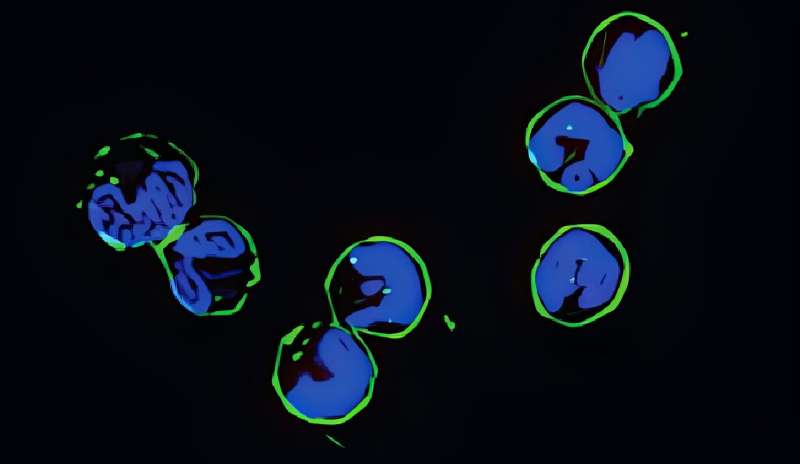This article has been reviewed according to Science X's editorial process and policies. Editors have highlighted the following attributes while ensuring the content's credibility:
fact-checked
peer-reviewed publication
trusted source
proofread
Study shows RNAs do work outside of cells to guide the immune system

Ribonucleic acids (RNAs) are the ultimate cellular insiders. They perform several critical jobs, such as ferrying genetic instructions from a living organism's DNA to its protein-making machinery (a process key to cellular processes) and controlling which genes are activated. All of these processes are conducted within the safe confines of the cellular membrane.
But in the last few years, scientists have been surprised to find RNAs on the surface of cells, too, well outside their known natural habitat. So what are they doing so far outside their comfort zone?
According to a new Yale study, one key function of these extracellular RNAs is to guide immune system cells within a type of white blood cells, known as neutrophils, to the sites of inflammation.
The researchers say they may just be scratching the surface in terms of understanding the previously unexplained roles that RNAs play in living organisms.
Their findings are published Jan. 22 in the journal Cell.
"Neutrophils are the firefighters or first responders to infections or injury," said Jun Lu, an associate professor of genetics at Yale School of Medicine (YSM) and co-corresponding author of the new study. "We found that without these RNAs on the surface of cells, neutrophils can't reach their destination."
It is also likely that these surface RNAs perform other functions that are still unclear, Lu said, adding, "It's the beginning of a whole new field."
The Yale research team was also led by Dianqing Wu, the Gladys Phillips Crofoot Professor of Pharmacology at YSM.
RNAs located on the surface of cells differ slightly from their cousins found on the inside of cells in that they contain glycans, or sugar, in their structure. In a series of experiments with mice, the Yale team found that when they eliminated cell surface glycoRNAs from the neutrophils, the first-responder cells were no longer able to respond to infections. Nor could they migrate out of the bloodstream through linings of blood vessels.
The Yale researchers found that glycoRNAs originate from RNAs inside the cells, but the specific process by which they are transported to the cell surface is still being studied. It is possible that regular RNAs inside the cells are repurposed for other functions on the cell surface, the researchers say.
Lu explained that more research must be done to understand the role of glycoRNAs in the function of the human immune system and whether enhancing this function might help the body fight infection, or alternately, whether their suppression might help combat autoimmune disorders.
Lead authors of the paper are Ningning Zhang, a postdoctoral associate, and Wenwen Tang, a research scientist in pharmacology. Zhang, Wu, and Lu are all members of the Yale Stem Cell Center.
More information: Ningning Zhang et al, Cell surface RNAs control neutrophil recruitment, Cell (2024). DOI: 10.1016/j.cell.2023.12.033
Journal information: Cell
Provided by Yale University



















